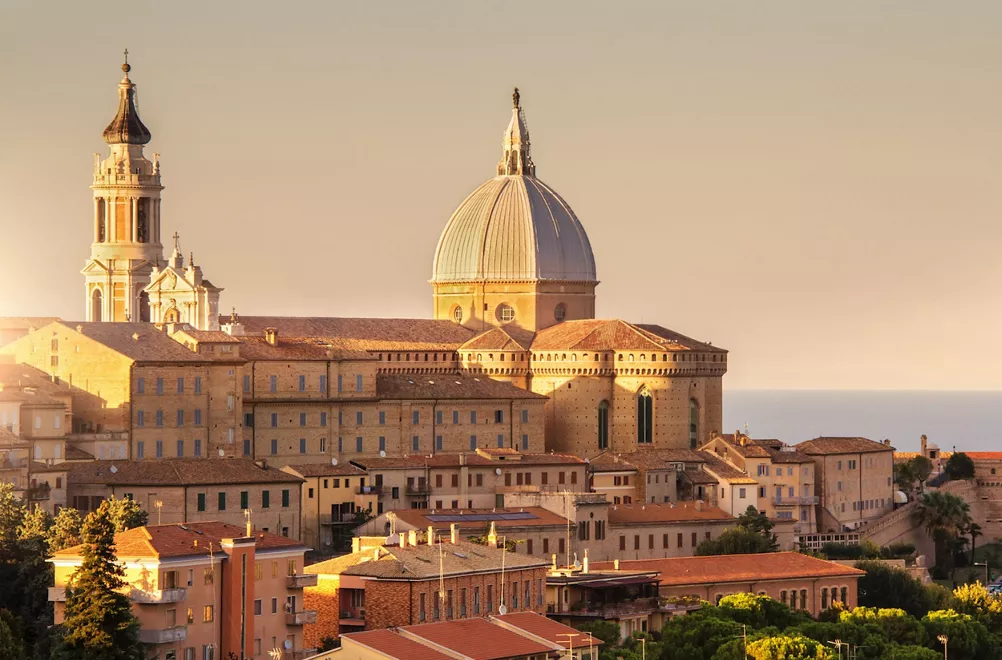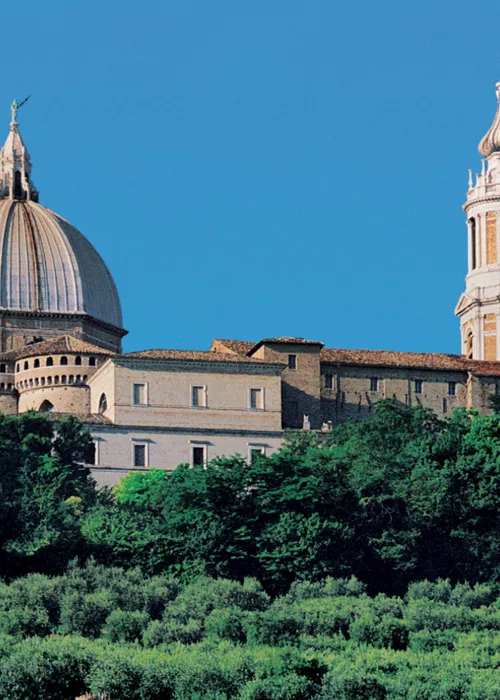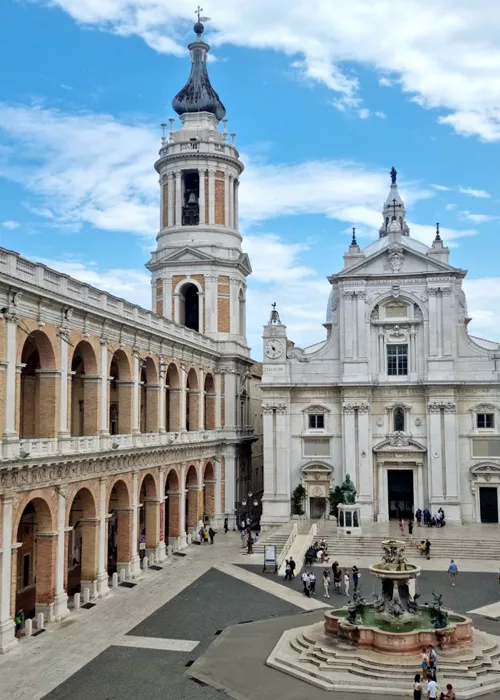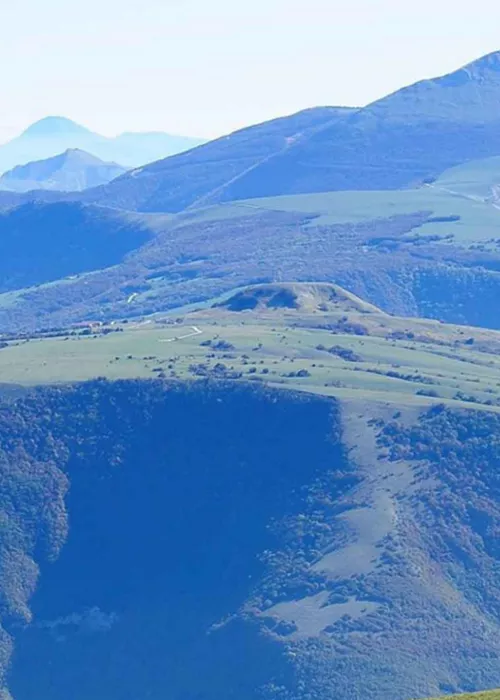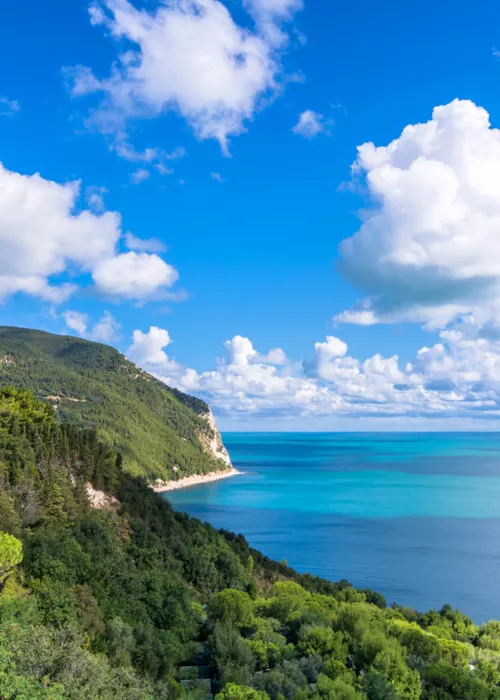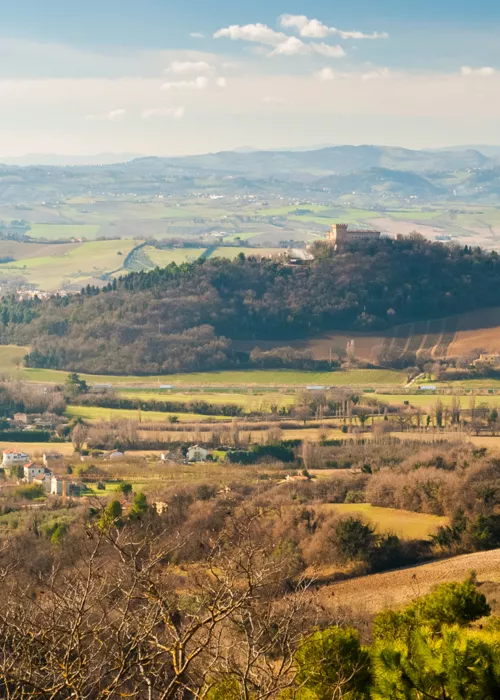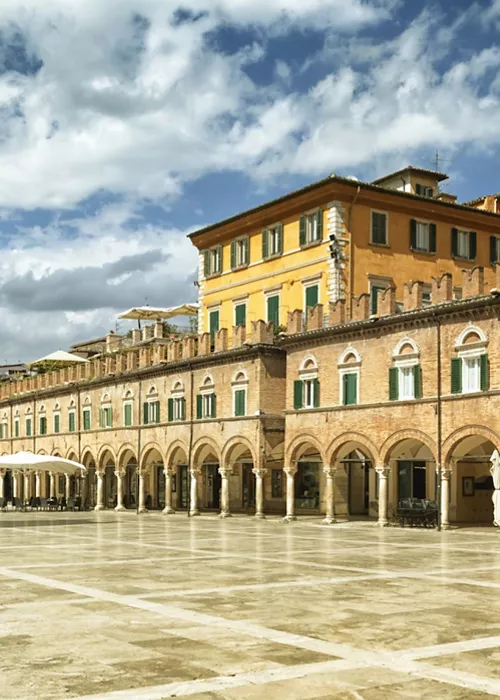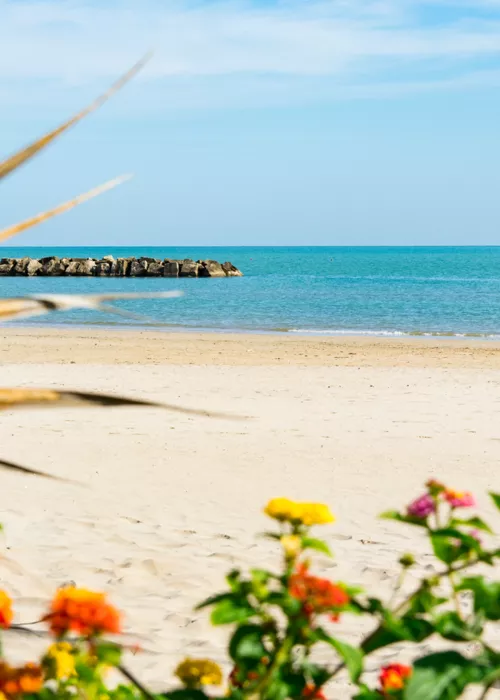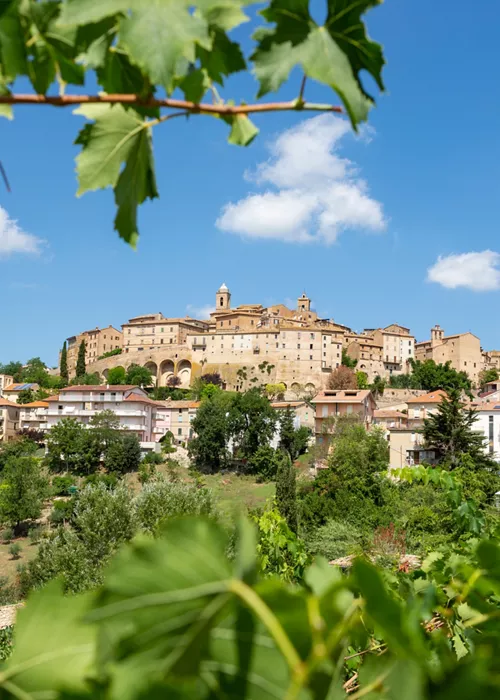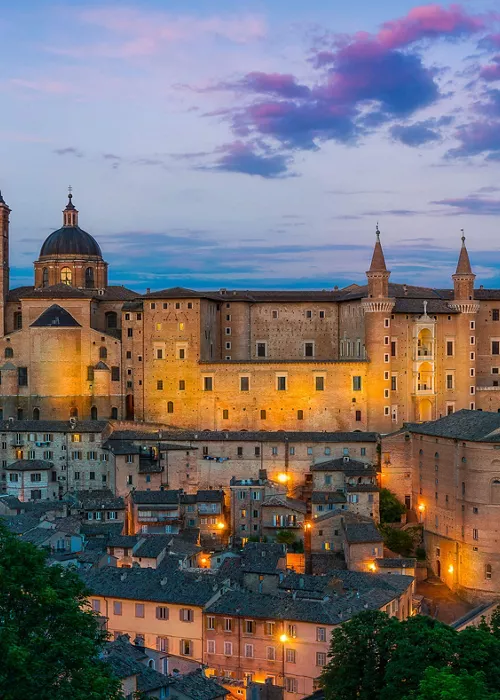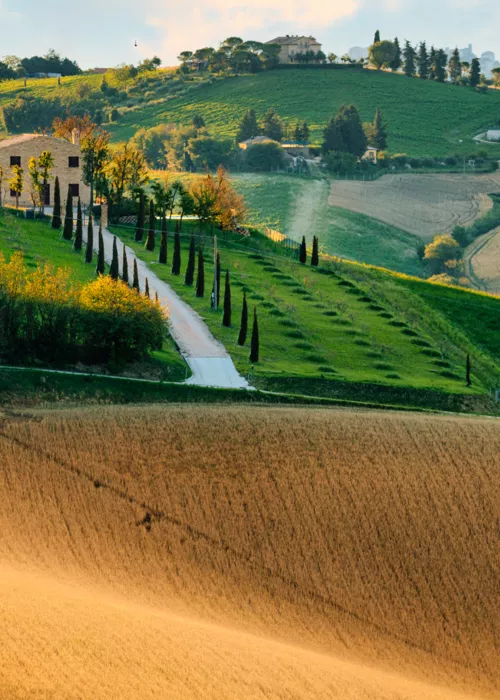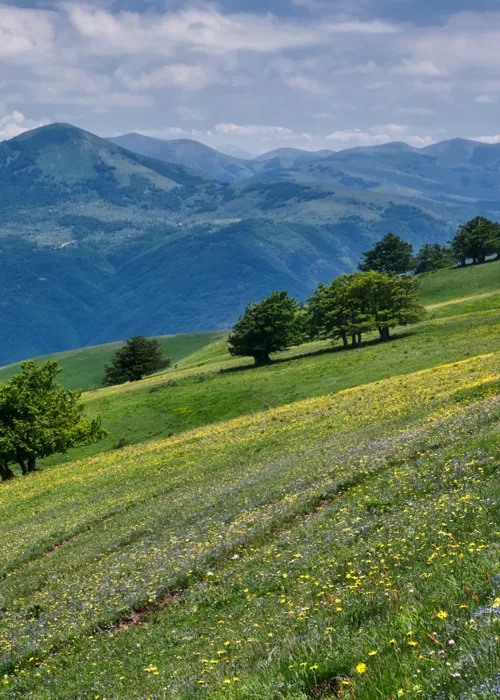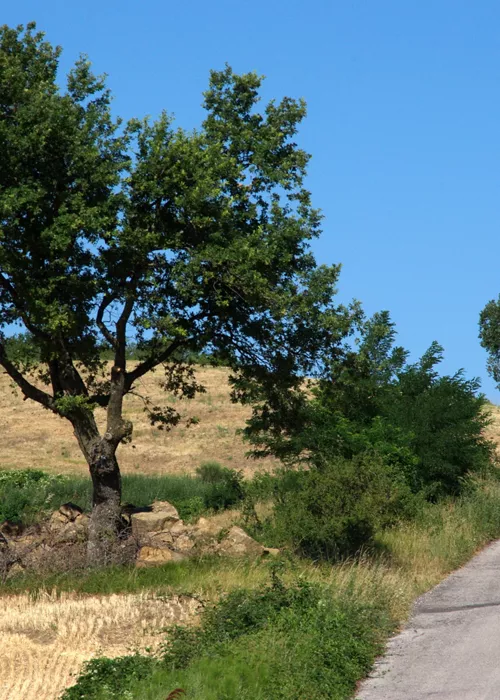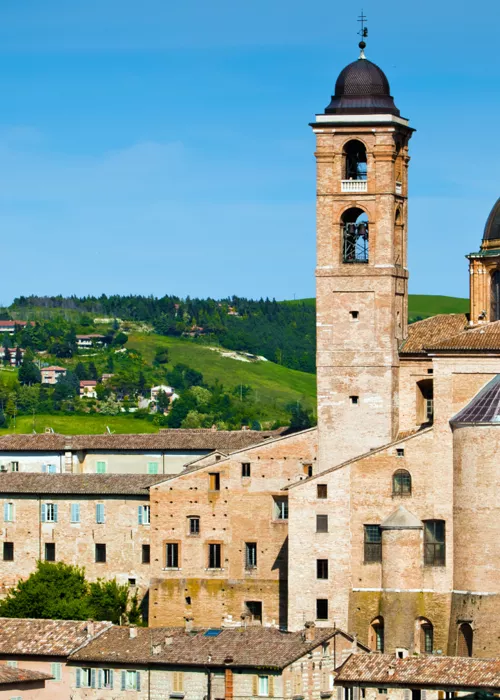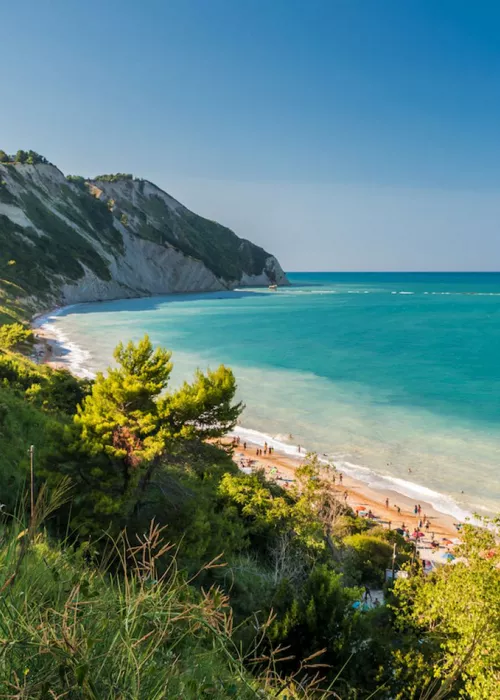The Sanctuary of Loreto
3 minutes
The splendid City of Loreto, tucked inside the countryside of the Marches Region, owes its fame to the Sanctuary (or Basilica) where the Santa Casa della Vergine Maria (Shrine of the Holy House of the Virgin Mary) is preserved and venerated. It is a holy place defined by Pope John Paul II as “the true Marian heart of Christianity”. The sanctuary has been one of the most important pilgrimage sites for the Catholic faith for centuries, having been visited by approximately 200 saints and beatified persons, as well as by numerous Popes.
According to ancient tradition, and today substantiated by historical and archaeological research, the Santa Casa is the house from Nazareth where the Virgin Mary was born, educated, and where she received the Annunciation. The house was composed of one room in masonry, with three walls in stone placed so as to enclose a rock cavern. This cavern is worshipped by pilgrims who flock to Nazareth, that is to the Basilica of the Annunciation, while the three stone walls, as legend has it, were brought to Italy (first passing through Illyria) by crusaders expelled from Palestine in 1291. The walls arrived in Loreto in 1294. Not only, but documents and archaeological excavations have continued to reinforce the hypothesis that the walls of the Santa Casa were transported to Loreto by ship, an initiative undertaken by the Angeli Family, nobles who ruled over Epirus at the time.
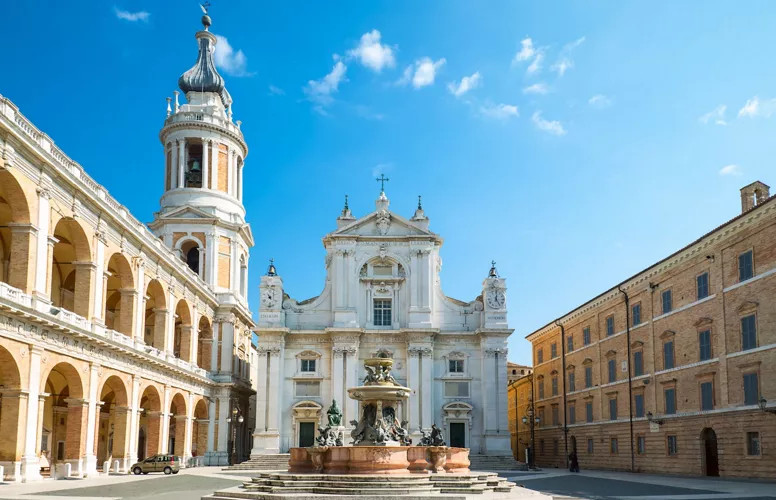
Indeed, one document dating back to 1294 (recently discovered), testifies that Niceforo Angeli, despot of Epirus, in offering his daughter Ithamar’s hand in marriage to Philip of Taranto (son of the King of Naples, Charles II of Anjou), gave the Prince a dowry that included such treasures as the “holy stones taken from the Home of our Lady the Virgin Mother of God”. In order to protect these humble stone walls, and to receive the ever-larger masses of pilgrims visiting the sacred relic, construction works on the magnificent Sanctuary of Loreto were begun in the mid-15th Century. Some of the most prized works here are the marble paneling of the Santa Casa’s walls, commissioned by Julius II and realized on Bramante’s design from 1507. It is considered one of the greatest sculptural masterpieces from the Renaissance. Since its beginnings, great artists have adorned the Sanctuary one after the other through the centuries: from Cristoforo Roncalli (so-called Pomarancio), painter of the Treasury Room and the cupola to Francesco Selva, who decorated the Sacristy Atrium and Tiburzio Vergelli, architect of the majestic Baptistry. As a result, the sanctuary’s fame diffused rapidly throughout the world, and it became a privileged destination for millions of pilgrims.
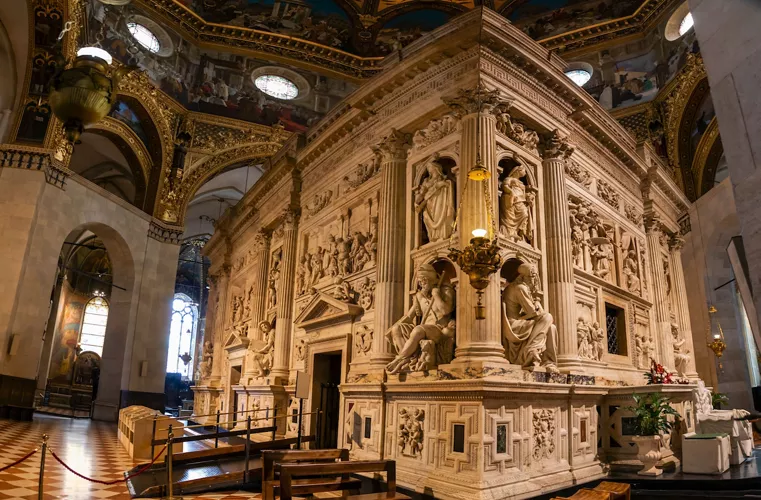
As the works drew to their conclusion, then, it was Carlo Maderno who created the fountain in the Piazza del Santuario (1600), while the feat of the bell tower on the Basilica’s left side is attributed to Luigi Vanvitelli (1700). The entire City of Loreto, immersed in the tranquility of the Marches’s quiet rolling hills, rose up around the Sanctuary della Santa Casa, constructed on a hill that offers a spectacular panorama touching both the sea near Monte Conero and the Umbro-Marches Apennine Mountain Chain. Today Loreto beckons to thousands of tourists – not just Catholics – for its grandiosity as a trove containing invaluable treasures. Besides the importance of the Santa Casa as object of pilgrim devotion, this site represents an authentic sacred art anthology that includes architectonic, sculptural, and painting master works by some of the most celebrated names in art history.
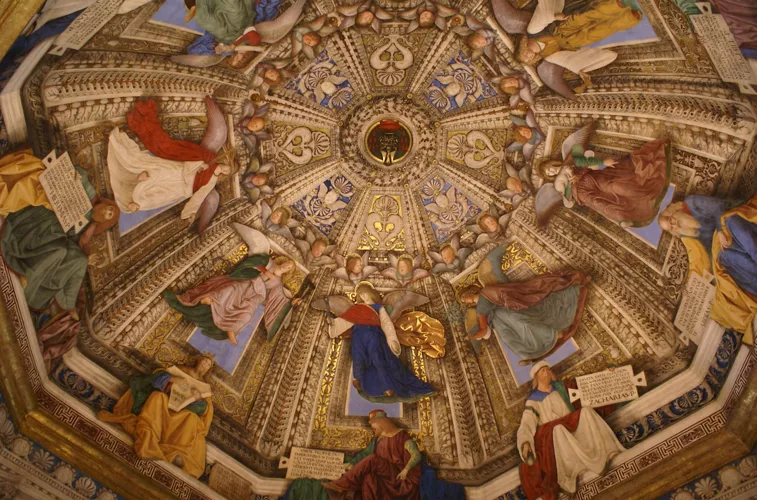
And the beautiful, charming borgo that developed around the Basilica offers remarkably-evocative vistas, externally and internally, e.g. the Museum-Painting Gallery in Piazza del Santuario featuring canvases by masterful Venetian painter Lorenzo Lotto. Thus, Loreto equals pilgrimage site, tourist locality and gracious city of art set amidst gorgeous scenery. Finally, worth noting is the Macerata-Loreto Pilgrimage, in existence since 1978 (when John Paul II became Pope): on this route thousands of pilgrims travel on foot every year, from Macerata to Loreto’s Sanctuary. Approximately half of the pilgrims originate from the Region of The Marches itself – the rest arrive in Macerata from all over Italy and various parts of Europe (particularly Belgium, Spain, Portugal, the republics of the former Yugoslavia, as well as Albania, Switzerland, and Germany).

